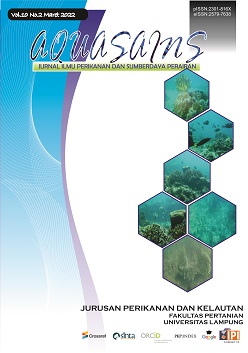ANALYSIS OF RIVER WATER POLLUTION DUE TO DISPOSAL OF NATURAL STONE INDUSTRIAL WASTE IN CIREBON REGENCY
DOI:
https://doi.org/10.23960/aqs.v10i2.p1061-1076 Abstract View: 461
Abstract View: 461
Abstract
The development of the industrial sector has caused many changes in environmental quality, including the natural stone industry in Cirebon Regency. Water pollution that occurs is mostly caused by the disposal of waste to the river. Wastewater containing sludge causes changes in water quality including turbidity, high total and suspended solids, and sedimentation. The purpose of this study was to examine the condition of water quality and the status of river pollution due to the disposal of natural stone industrial waste using the STORET method and the pollution index. As a result, the concentration of TSS reached 1,042.33 mg/L and has exceeded the class III quality standard based on Government Regulation Number 22 of 2021. Pollution status based on the STORET method shows stations 1 and 2 are in the moderately polluted category, while station 3 is included in the category of lightly polluted. Meanwhile, based on the pollution index method, each station is included in the lightly polluted category. The results of both the STORET and the pollution index showed that station 2 had the highest score. Thus, efforts to treat waste from natural stone industrial activities are needed to reduce the rate of increase in river pollution.

.png)










